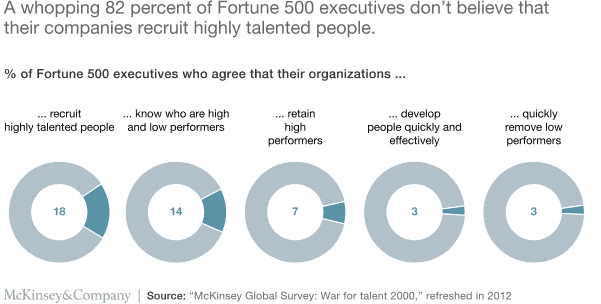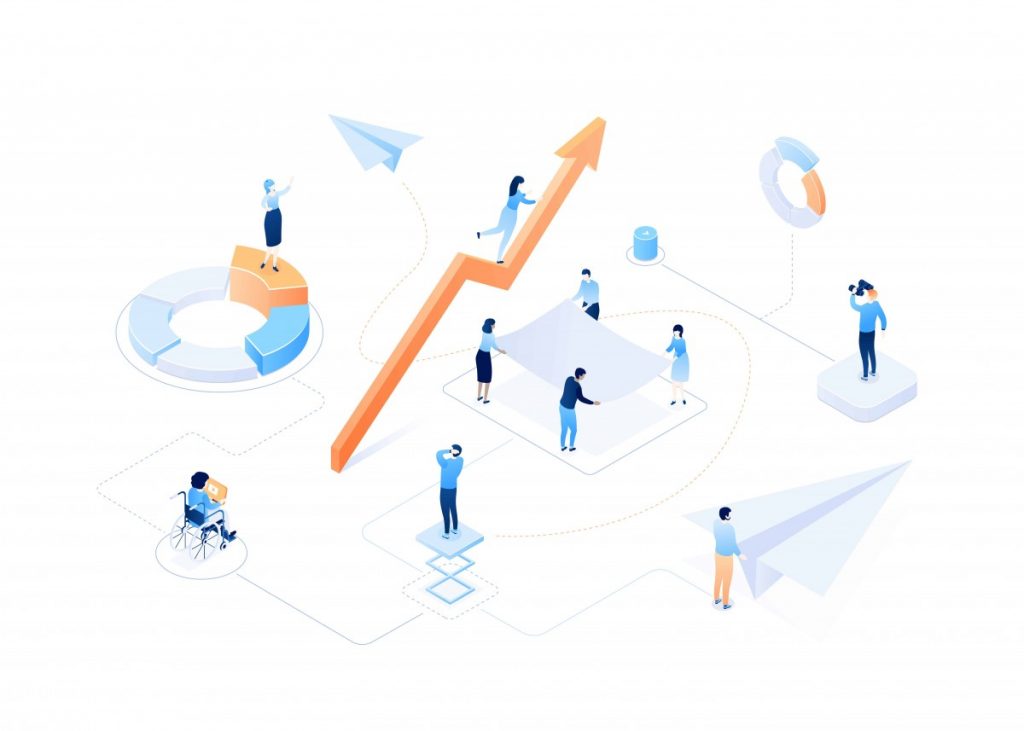No Results Found
The page you requested could not be found. Try refining your search, or use the navigation above to locate the post.


Vorausdenker gesucht!
Deine künftige “Karriere-Heimat”: ein gestandenes, innovatives Unternehmen mit internationalen Produkten und Kunden.
Du kennst unseren Mandant vielleicht bereits aus dem Internet! Es erwartet Dich ein krisensicherer Arbeitsplatz mit guten persönlichen Entwicklungschancen.
Dein potenzieller neuer Arbeitgeber besticht durch flache Hierarchien, kurze Wege sowie eine offene Kommunikation.
Lass Deine Karriere durchstarten und bringe frischen Wind in die Branche!
Wir freuen uns auf Dich!

Working from home






Bereich
IT
Branche
Elektrotechnik, Feinmechanik und Optik
Stadt/Region
Düsseldorf (Remote)
Ebene
Experte / Spezialist
Art
Festanstellung
Gehalt
80.000 € – 90.000 €
Kennziffer
20211014_01
Klingt nach einem interessanten Job? Dann freuen wir uns über die Zusendung Ihres Lebenslaufs/CV.
Einfach auf den Link klicken.
Keine Angst… unser Service ist komplett kostenfrei für unsere Talente. Ist doch klar!

Als Dein Talent Scout kümmere ich mich um Deine neue Karriere – über den Job hinaus.
Wir Talent Scouts sind wie ein Manager eines Rockstars. Wir sorgen dafür, dass Du den richtigen Job mit den besten Bedingungen in einem exzellenten Team bekommst.
Ein Job in dem Du nicht nur happy bist, sondern in dem Du auch wachsen kannst und die Anerkennung findest, die Du verdienst.
Das reicht von der Optimierung Deines Lebenslaufes, bis zur individuellen Interview-Vorbereitung, und vom Potential-Assessment bis zur Step-by-Step Karriere-Planung.


In today’s job market, references are an essential part of the job application and hiring process. An outdated practice still common in many organizations is the method of checking references at the end of the hiring process.
However, researchers found is that the bulk of recruitment managers (39 per cent to be exact) believe that reference checking in its current format is a formality which serves little purpose. 17 per cent also named the reference checking process as the most frustrating element of the hiring process. But even with good references, the hiring team often still needs to go back over the entire interview process and all the other candidates and determines the best fit.

Reference checking is rarely an objective evaluation of an applicant’s past job performance based on information collected from key individuals (e.g., supervisors, peers, subordinates). However, the hiring manager needs to make the best decision possible, thus more firsthand information is important.
Examiz MATCH replaces all the traditional, flawed, time-consuming and heavily biased reference checks. MATCH is able to generate valuable insights in a timely manner, helping managers and recruiters to make informed hiring decisions. MATCH finds the high-performers and high-potentials among your candidates, helps companies avoiding toxic people, and even generates tailored interview questions that target the specific weaknesses of each job applicant.

In today’s job market, references are an essential part of the job application and hiring process. An outdated practice still common in many organizations is the method of checking references at the end of the hiring process.
However, researchers found is that the bulk of recruitment managers (39 per cent to be exact) believe that reference checking in its current format is a formality which serves little purpose. 17 per cent also named the reference checking process as the most frustrating element of the hiring process. But even with good references, the hiring team often still needs to go back over the entire interview process and all the other candidates and determines the best fit.

Reference checking is rarely an objective evaluation of an applicant’s past job performance based on information collected from key individuals (e.g., supervisors, peers, subordinates). However, the hiring manager needs to make the best decision possible, thus more firsthand information is important.
Examiz MATCH replaces all the traditional, flawed, time-consuming and heavily biased reference checks. MATCH is able to generate valuable insights in a timely manner, helping managers and recruiters to make informed hiring decisions. MATCH finds the high-performers and high-potentials among your candidates, helps companies avoiding toxic people, and even generates tailored interview questions that target the specific weaknesses of each job applicant.

Organizations should embrace a more expansive and dynamic view of their talent supply—one that tosses out the usual preoccupation with titles and traditional roles and looks instead at the underlying skills people have. Indeed, we find that when companies start with skills—the ones they need, the ones they have, and how the mix may change over time—they can free up their thinking and find more creative ways to meet the inevitable mismatches.
In the book Leading Organizations, McKinsey senior partners Scott Keller and Mary Meaney address the most basic issues facing leaders: attracting and retaining talent, developing the talent you have, managing performance, creating leadership teams, making decisions, reorganizing to capture value quickly, reducing overhead costs for the long term, making culture a competitive advantage, leading transformational change, and transitioning to new leadership roles.

Citations from McKinsey Business Insights | 2017 – 2020

Organizations are always looking for ways to improve employee productivity, and they can learn from high-performing companies. Companies like Google, Apple and Netflix are 40% more productive than the average company by using a mix of employee performance management strategies that focus on organizational structure and trust-building.
David Mizne from 15five Blog stated that according to research by Bain & Company, the way companies construct their teams has a significant impact on productivity. Apple and Google for example, dedicate 95% of their top talent to key business functions, as opposed to spreading top talent across many areas.
Without talented and dedicated people, a business is little more than a great idea. While this seems obvious, companies didn’t always focus on employee performance management to stimulate growth and satisfaction as they do now. Developments in this area over the last few years have brought this truism home like never before.
What Is Work Performance?
Work performance is an evaluation of employees based on how well they are executing their expected work. It includes an individual’s performance with respect to documented responsibilities, goals, and reasonable expectations with other associates of the company. Work performance of an employee is directly influenced by his work engagement.
So, How Do We Define Work Engagement?
It’s a positive, fulfilling work-related state of mind which is categorised by vigor, dedication and absorption. It is very recent that scholar across the globe has shifted from negative aspects of working life to the positive aspects. The well-being of an individual is not a responsibility of their employers but also of that individual himself. A mentally, emotionally and physically heathy employee can not only increase his productivity but also his own performance. Work performance is optimal when an employee is in a healthy- motivational state of mind.

Is Work Engagement And Work Performance Related?
Yes, the more the employees are engaged with their work the more is their productivity. Demerouti & Cropanzano (2010) explains that work engagement is beneficial for both employees and organization because an employee with high level of energy and enthusiasm, fully concerned and happily engrossed in his work can easily increase his work performance. This person exudes positive emotions such as happiness, joy and enthusiasm and helps building a positive work culture around him.
There is a direct and positive correlation between happiness and performance. Happiness can be measured through work satisfaction and well-being. Examiz TEAMS evaluates what teams actually think, what concerns them and what holds them back to become high-performance teams. Job satisfaction is considered as an evaluation of the experienced job and motivational; whereas, well-being is considered as a motivational state of mind. A combination of both, well-being and satisfaction, is a measure of work engagement.
Further, as per the well-established Broaden and Build Theory by Fredrickson (2001), “Positive emotions share the capacity to broaden people’s momentary thought- actions repertoires and build their personal resource”. Personal resources are the physical, intellectual, social and psychological resources that widen the array of thought and actions of an individual. Action repertoires are the behavioural repertoire that builds skills and resources. Personal resources and simultaneous action help an individual to cultivate positive emotions.
How Does Work Engagement Impacts Work Performance?
If the manager of the company has high anxiety level, this could easily pervade in the work culture, which leads to fight or flight response. However, if a manager is determined, enthusiastic and focuses on his well-being and that of other employees, the work environment is healthy one to work in. Engaged workers are more likely to fulfill their jobs and also accomplish the diverse range of work tasks and responsibilities, that they are required to fulfill.
What A Company Should Do To Ensure Work Engagement?
CEO of Campbell’s Soups rightly states, “To win in the marketplace you must first win in the workplace”.
The company’s top priority other than to earn high returns is to keep people engaged with them happy. A company should endeavor to focus more on work engagement rather than just getting the work done. They should find ways to motivate the employees and enhance their well-being. Only when an employee is happily engrossed in his work, is enthusiastic and resilient towards his work he can perform the task in hand in the best possible way. Employees around the globe feel happy when the companies pay them fairly, provide them with safe working conditions and good benefits. In addition, developing a positive work culture in an organization where the employees feel recognized and appreciated, helps maximize an individual’s personal capabilities and ensures the overall growth of the company and the individual himself. With such benefits that an employee earns, he will not only complete the task in hand in stipulated time but will also be willing to share responsibilities with others and help this around him to become better.
People Analytics tools like Examiz TEAMS helps organizations to map the personality-driven DNA for their high-performance teams and enables organizations to form their teams be be the best-performing in the respective industry or market.

Interviewer: Do you easily get agitated?
Candidate: No, not at all.
Interviewer: What would you do, if you do not agree with your teammate’s idea on a certain assignment.
Candidate: I would listen to his ideas and then try to convince him but if he does not get convinced then I’ll go with the majority of the team.
Interviewer: If there happens to be an argument between you and your team head, what would you do then?
Candidate: Firstly, I will try my best not to get into an argument and secondly, if the situation still arises, I will try to be as humble as I can and try to control the situation calmly but I wouldn’t just submit to him just because he’s my team head.
Sounds all reasonable and smooth.. textbook answers, right? But ask yourself this, are these questions helpful to detect how aggressive an individual is? Is the candidate really being honest here? Do we even know what workplace aggression is?
Donovan, Dwight and Hurts (2003) reported that 15% individuals fake their personal identity while 62% of them fake when it comes to answering questions on negative behaviour and aggression is a type of negative behaviour. According to Snell, Sydell & Luke (1999), an individual who can fake a self-report test must have both, the ability to fake and the motivation to do so. An individual in a traditional measure can easily fake their responses due to the direct nature of these questions, as they wouldn’t want to come across as an aggressive individual. A dishonest person will always be motivated to do so.
It is very recent in times that workplace aggression has become the epicentre of research in various organizations. Psychologists have defined workplace aggression as an act of threat or physical assault causing physical or emotional harm at work setting. They have further divided into three forms: Reactive, Hostile and Appetitive aggression.
If an employee constantly makes derogatory remarks, humiliates others or diminishes self-esteem of their colleagues, an organisation must be watchful of such employees. This particular kind of aggression is not planned, hence the intent here is not to cause any harm but to establish dominance. It is caused by both intrinsic and extrinsic emotions of that individual. Psychologists determine this kind of aggression as Reactive- Expressive Aggression or simply reactive aggression. A reactive aggressive individual generally humiliates others, makes derogatory remarks and increases apprehension and stress among others
But sometimes, an individual’s main goal is to harm others and it may or may not be visible in his/her actions. The emotion that individual experiences is anger and he wishes to see other people suffer. An employee with this kind of aggression will constantly get into arguments which can easily manifest itself into a violent confrontation. This kind of individual will keep the environment tensed as everyone around would be very cautious as they wouldn’t want to harm themselves. This kind of aggression is called Reactive and Inexpressive aggression or Hostile aggression.
Furthermore, there are individuals who are highly competitive. The intention of these individuals is to win and they can do anything to complete a given task. These individuals generally do not experience anger but due to their competitive nature, they can harm anyone who comes in their way. This kind of aggression is called Proactive-Relational aggression or Appetitive aggression because these individuals would like to have a competitive advantage over others and this behaviour often breaks human relations.

So, simply by framing questions like, “Do you have a bad temper? Do you show resistance to arguments? Do you show displeasure or discomfort in a particular situation?”, are not enough to check an individual’s aggression. Also, a person may answer these questions in a way that shows that he is less aggressive but there is a possibility that an individual can easily fake such a test.
Psychologists have worked hard to find the right ways to detect aggression in an individual. As a recent development, faking scales have been constructed to measure the aggression in an individual. Examiz uses for instance “Self-Deception technique”, in which the questions are framed in a manner that the individual himself cannot recognize his incorrect perceptions and believes that the options he chooses are the only correct answers, which is generally due to the inflated sense of the individual. Another such way to detect this is Impression Management. In this kind of method, the questions are framed in a way that a person repeatedly chooses options which makes him look good and tries to create an impression, which is often fake.
Aggressive behaviour in any form is harmful to any organization or a company. It puts all the employees at risk, decreases the trust and hinders their productivity. An organization must be cautious enough not to hire individuals who depict these traits and even if they hire such individuals, they should be able to detect the carriers of this aggression so that they can be managed accordingly.
Consider the cost of hiring the wrong person. According to Christine Porath, author of “The Cost of Bad Behavior,” incivility in the workplace can significantly damage the company’s bottom line. Incivility is described in both passive and aggressive behaviors, like taking credit for someone else’s work or spreading rumors about a colleague. According to Porath’s study of Cisco Systems, if 1% of employees experience any form of incivility in the workplace, it would cost the company up to $12 million a year.
Examiz detects patterns of unwanted behavior very early in the recruitment process and helps you to avoid the “bad apples” and protects you from bad hires.

Hiring employees is not rocket science, but complex and difficult. Even as we speak here, somewhere some company is hiring individuals at their end. There is no shortage of people who are willing to work but when it comes to hiring, the only thing we want you to know is this: Don’t end up hiring people without knowing their personality. Personality is nothing but a distinctive characteristic that makes an individual unique.
Every individual has a different personality which defines him/ her and this is what makes his way of doing things unique and attracts attention of the employer.
Here’s a thing you should always remember before you hire an employee: Don’t hire people who say that they can finish a given task in a matter of seconds or those who need a whole lot of time for evaluation before finishing a task. As a company, even if you hire them and do not allocate them for the right position, you will end up losing as much as you thought you would have gained, by hiring them. Both kind of employees can be troublesome for an organization.
Know more about various personality traits that are essential before you hire an employee. The modern psychologist has tried to evaluate the data and understand the personality traits of a human being. They have tried to study our behaviour and predict what we do. One very famous study that examines the personality of an individual is the Big Five Personality Model, which claims that an individual’s personality has five basic dimensions. They are openness to experience, conscientiousness, extroversion, agreeableness and neuroticism.

According to John & Srivastava (1999), these five factors can be easily linked to employees and their way of interaction with other employees.
Extraversion versus Introversion:
An employee who is an extraversion is very social and tries to build a good reputation with other employees. This person can be an effective leader and can boost productivity of the company in comparison to a person who is an introvert and can be an efficient employee but not be an effective leader.
Agreeableness versus Antagonism:
An employee who has high agreeableness can be kind, cooperative and prompt while being at workplace. Such employee should ideally not be in a leadership position as his thoughts and actions can easily be channelized by others. A leader should listen to other employees but act wisely. If a leader is not compassionate enough towards other employees then there might be a lack of trust and other employees may not follow the path shown by the leader.
Conscientiousness versus Lack of Direction:
The third trait and a very important trait is conscientiousness. For an employee, it is very important that he knows what the plan of action is. The company always has certain task at hand which should be completed in time to deal with its customers/clients efficiently. A conscientious person is efficient and dutiful. Such kind of employees do not need extrinsic motivation as they are self-driven in achieving the tasks at hand. An employee who lacks intrinsic motivation will always feel forceful to complete a task and hence company can lose a lot if such employees are hired for wrong positions.
Openness versus Closeness to Experience
An employee who is curious to learn, which is depicted through his actions, is exactly the right kind of employee that a company needs. A person who is closed to new experiences is generally a person who follows unconventional thought process and this kind of employee will not easily experiment with new ways for performing a task. Hence, an important personality trait that an employee should nurture is being open to new experiences.
Neuroticism versus Emotional Stability:
This trait deals with anxiety and one’s well-being. A minimal level of anxiety is acceptable as this gives a push to an employee to be on track and attain the task within stipulated deadlines. However, if the anxiety level is high, it can turn into stress and instability in the working of an employee. A person with high neuroticism can be a perpetrator of stress not just for himself but also among his co-workers. This has negative effect on the working of an employee. A company should always hire an individual who is not a stress perpetrator but one who develops confidence, not just on his own self but also among the co-workers.
The above mentioned five personality traits are culture neutral i.e. we can generalize them over all employees from different cultures. These big five personality are a few out of the dozens of traits that a company should consider before hiring an individual. These 5 personality traits may be enough to evaluate the personality of an individual but they are not sufficient indicators to evaluate an employee. An employee has to manage not just his emotions but emotions of his colleagues also. Hence, the individual should not be judged based on his personality traits but how he deals with the environment around him.
Once the company knows about an overall personality and how that individual engages with others, only then a company can promote the best out of that individual and create a healthy working space for all its employees.
So, before you hire be careful of what personality that person has!

One major reason for a company to not have business success despite high vision and planning is because of the negative behaviour of a few of its employees. Negative behaviour is an outcome of emotional imbalance within an employee which with time can be overtly visible in their behaviour.
It is more than a month now, that I haven’t met my best friend Aakshi and the reason she gives is that, “she had a deadline tonight”. This kept me wondering as to how a brilliant and devoted girl like Aakshi is unable to finish her work on time. I used it as a reason to pull her leg, as since childhood she has been an ideal child for my parents and it is because of her that I had to work extra just because she used to finish all her assignments beforehand giving her time to revise which I never got.
In a taunting tone, I said, “How lazy you have become that you are unable to meet the targets even on time”. I was expecting a befitting reply but to my much surprise she said, “I wish the instructions from my boss were more detailed at the time he distributes the work”. She further added that he is one insecure person, always withholds the information and as soon we reach the deadlines, he sets unachievable targets. I was shocked to hear that. A person at such a position where he should be motivating the rest of the employees and setting an example for other employees is doing the opposite.

But this is not a surprise when you see the data. A study conducted on American employees on experiencing workplace bullying it is found that 75%-96% of the Americans experiences bullying. Researchers have given important to bullying as the major role in spreading negative behaviour. In a company when the information is not passed from the planners to the executors, there is a huge set back in the targets that the company has set to achieve.
But, in the present times it has seen that by removing only the propagators of bullying does not decrease the negative behaviour amongst its employees there is something else that should be removed. The information should be circulated in a timely manner, the channel through which the information is being disseminated should be clear and achievable targets should be set. In a study conducted on employees at the National Health Service (NHS), it was found that 50% of the employees have experiencing negative behaviour. Now, just imagine if an employee who is experiencing negative behaviour is still managing to provide the best health care services, but that time is not far that, he himself would need help to recover from the emotional distress caused by negative behaviour.
Hence, removing only the propagators of bullying does not decrease the negative behaviour amongst its employees there is something else that should be removed. The information should be circulated in a timely manner, the channel through which the information is being disseminated should be clear and achievable targets should be set.
Now, negative behaviour of not just the employee at the top hierarchy is harmful but also that which is prevalent among the same position. Just imagine if you have a pressing deadline and a team member is unable to manage its anxiety of the not reaching a deadline. Wont that anxiety be passed on the to other team members. Yes, it will, and other team members may be influenced by anxiety and may feel irritated and furious.
This will not just hamper the work of that employee but of the whole team involved with the same project and in the long run, the company will not be able to fulfil their targets. This anxiety of one person gets dispenses to others in the company and a cloud of despair won’t be helpful for the company to increase their sale, reach set targets or make profits. Such behaviour of not disseminating proper information, setting impossible targets, anxiety amongst its employees, by either the people at higher authority or at the colleagues’ level creates emotional unrest. The above-mentioned behaviours are a few among a lot that psychologists say a company should check their employees before they hire and put them at positions which can really turn a profitable company to run into losses.

People analytics is a data-driven approach to managing people at work. For the first time in history, business leaders can make decisions about their people based on deep analysis of data rather than the traditional methods of personal relationships, decision making based on experience, and risk avoidance. People Analytics is using behavioral data to understand how people work and change how companies are managed.
People analytics is also known as workforce analytics, HR analytics, talent analytics, people insights, talent insights, colleague insights, human capital analytics, and HRIS analytics. HR analytics is the application of analytics to help companies manage human resources. Additionally, HR analytics has become a strategic tool in analyzing and forecasting Human related trends in the changing labor markets, using Career Analytics tools. The aim is to discern which employees to hire, which to reward or promote, what responsibilities to assign, and similar human resource problems. HR analytics is becoming increasingly important to understand what kind of behavioral profiles would succeed and fail. For example, an analysis may find that individuals that fit a certain type of profile are those most likely to succeed at a particular role, making them the best employees to hire.
However, there are key differences between people analytics and HR analytics. “People Analytics solves business problems. HR Analytics solves HR problems. People Analytics looks at the work and its social organization. HR Analytics measures and integrates data about HR administrative processes,” says Ben Waber, MIT Media Lab Ph.D. and CEO of Humanyze. Josh Bersin, founder and principal at Bersin by Deloitte agrees that people analytics is a larger industry than HR Analytics, explaining, “… over time, I believe it doesn’t even belong within HR. While it may reside in HR to begin with, over time this team takes responsibility for analysis of sales productivity, turnover, retention, accidents, fraud, and even the people-issues that drive customer retention and customer satisfaction… These are all real-world business problems, not HR problems.”
People analytics, also known as talent analytics, refers to the method of analytics that can help managers and executives make decisions about their employees or workforce. People analytics applies statistics, technology and expertise to large sets of talent data, which results in making better management and business decisions for an organization. People analytics is a new domain for most HR departments. Companies are looking to better drive the return on their investments in people. The old approaches of gut feel is no longer sufficient.
What Are the Benefits of People Analytics?
People analytics helps organizations to make smarter, more strategic and more informed talent decisions. With people analytics, organizations can find better applicants, make smarter hiring decisions, and increase employee performance and retention.
Examiz tools for people analytics products apply sophisticated data science and machine learning to help organizations more efficiently and effectively manage their talents. Examiz’s analytics suite give organizations options for viewing, understanding and acting on talent data across the entire employee lifecycle. This includes Examiz TEAMS, an intuitive workforce and organizational analytics tool set that helps organizations easily create, manage and execute accurate hiring plans over multiple time horizons, plus gives business leaders deeper intelligence about their people, as well as Examiz MATCH, our predictive and prescriptive analytics solution that equips business leaders with the intelligence to better recruit, train, manage and develop their people.
Partially cited from Wikipedia: https://en.wikipedia.org/wiki/Analytics#People_analytics

“People leave managers, not companies.”
We’ve all heard it. Many of us have experienced it. But what makes people want to leave a manager in the first place? And if you happen to lead a team, what qualities can make you better?
Those are the types of questions Google set out to answer. In 2008, they began research into what makes a good manager, code-named Project Oxygen. They originally identified eight behaviors that were common among their highest performing managers, and began training all managers to develop those behaviors. Over time, Google saw a marked improvement in key metrics such as employee turnover, satisfaction, and performance.
But as the company grew, the demands on managers also increased. Google continued their research. They refined it. They learned more.
“We found that, over time, the qualities of a great manager at Google had grown and evolved with along with the company,” wrote Melissa Harrell and Lauren Barbato earlier this year.Harrell works as a staffing services manager and Barbato as a people analyst.
After taking a second look at its research, Google then “refreshed [its] behaviors according to internal research and Google and [employee] feedback, and put them to the test.”
This resulted in a new list, identifying two completely new behaviors (Nos. 9 and 10) and updating two others (Nos. 3 and 6).
Here are the 10 behaviors of Google’s best managers, along with some practical tips on how to develop these behaviors. (You can find more detailed advice on developing your management skills in my new book, EQ Applied: The Real-World Guide to Emotional Intelligence.)
A good coach avoids the trap of solving every problem for their team as soon as it arises.
Rather they use these problems as teaching moments. They guide and share insights at the right time, letting their team gain valuable experience along the way.
Everybody hates a micromanager. In contrast, a good team lead gives their people enough freedom–to explore new ideas, to experiment, and to develop (and adapt) their own working style.
In addition, great managers make sure their people have the tools and flexibility they need to do their jobs.
Great managers make it a priority to build trust in their teams.
As Google puts it:
In a team with high psychological safety, teammates feel safe to take risks around their team members. They feel confident that no one on the team will embarrass or punish anyone else for admitting a mistake, asking a question, or offering a new idea.
(More on how to build this type of environment here.)
The best managers make those around them better.
They realize what their teams are capable of, and they use emotional intelligence to motivate their people and help them realize their potential.
Great managers are great listeners–this enables understanding. They also share what they can, realizing transparency is beneficial for the team as a whole.
They share sincere and specific praise, early and often. But they also don’t hold back from giving necessary (negative) feedback–making sure to frame it in a way that is constructive and easy to learn from.
Great managers are invested in their people. They provide career path options, realizing not everyone wants to follow the same road.
They also don’t hold their people back for personal gain. Rather, they support team members and help them to reach their goals.
Great managers know where they’re going, but they make sure the whole team knows, too–rather than keeping them in the dark.
They are also careful to communicate “scope,” realistic expectations as to what specific actions are needed to execute a strategy, and each team member’s role in delivering.
Great bosses understand a job well and are skilled at the work they oversee.
If an effective manager is brought into a new department, they take time in the beginning to familiarize themselves with their people’s everyday work and challenges. This earns them the respect of their team.
Some managers create silos, running their teams with an “us versus them” mentality, competing against other teams within the company.
Great managers have the ability to see the big picture, and work for the good of a company as a whole.
Great managers take the lead. They make the tough decisions, and make sure everyone understands the reasons behind those decisions.
Then, they commit to following through.
Of course, the first step–identifying effective manager behaviors (and tips for developing them)–is easy. Execution is the hard part.
But it’s managers like these that will help your people–and your company–accomplish great things.
First published on Inc.com by Justin Bariso